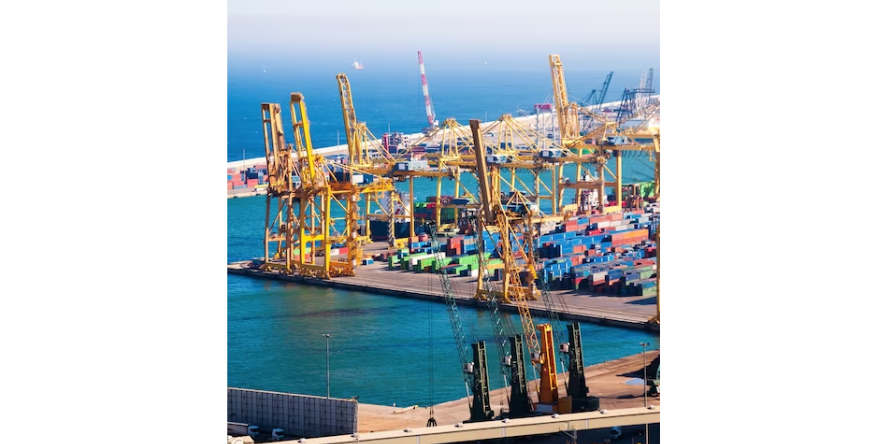The rich tapestry of global history is intricately woven with threads of trade and commerce. At the heart of this vibrant interplay of culture, ideas, goods, and people lies the evolution of shipping and maritime trade. Spanning thousands of years and numerous civilisations, it is particularly compelling when we trace the routes from South Asia to Africa, two regions that have played a pivotal role in shaping the world’s trading landscape. Let us delve right into this evolution, from the dusty trails of the ancient Silk Road to the bustling ports of the modern era.

Introduction
The current surge in trade between the developing nations in Africa and Asia is the apex of South-South trade. This trade is fuelled by developing economic giants like China and India, whose wants for commodities in Africa keep on increasing. Especially in Sub-Saharan Africa (SSA), which is raising demand for Asian manufactured goods. Spanning centuries and oceans, this journey has not only connected two distant regions but has also played a pivotal role in shaping the global exchange of goods, ideas, and cultures.
Travellers crossed oceans with the advent of trade routes that connected them across several continents. Commodities like silk, spices, gold, and precious elements formed a network of cross-continental commercial interactions. The geographical advantage served Asia and Africa as hubs in the marine trade. With significant seas and oceans bordering their coastlines, the area served as entry points to a huge marketplace, facilitating the exchange of goods, ideas, and traditions. From the spice-laden vessels of the Indian subcontinent to the gold and ivory trades of Africa, these regions have shaped global commerce in profound and lasting ways.
Role of South Asian Countries in Ancient Maritime (shipping) Trade
India played a significant role in ancient maritime trade. It was recognised for its abundant resources, especially spices, textiles, and gemstones. The monsoon winds propelled ships, giving South Asia a crucial connection in east-west commerce routes. India made commercial ties with the oldest civilizations, such as Mesopotamia, Egypt, and Rome.
One of the earliest urban civilizations, The Indus Valley, maintained a bustling maritime trading network. Lothal, an ancient port city(present-day Gujarat in India), showcased how maritime trade plays a significant role in the local economy.
In India, the Mauryan Empire of Ashoka, the Cholas and a variety of kingdoms and empires in Southeast Asia, China, and Africa had diplomatic and commercial ties with each otheracross the Indian Ocean.
In general, South Asian nations have a long history of engaging in maritime trade, which has aided in the interchange of products, concepts, and cultures throughout various parts of the world.
Role of Africa in Ancient Maritime Trade
Africa played a vital role in maritime trade as a significant supplier of gold and ivory that were traded across the Red Sea and Mediterranean trade routes. Carthage became a marine hub that facilitated trade between Asia and Europe. Maritime trade was influenced by the Kingdom of Aksum, which was situated in what are now Ethiopia and Eritrea. Due to their influence over the Red Sea trade channels, this kingdom was able to export products like spices, gold, and ivory. Aksum also brought from the Roman Empire opulent goods like silk and glassware.

The Swahili Coast and Indian Influence
The development of the Swahili coast marked an important milestone in trading history. The blend of culture and commerce paved the way for new ideas and thoughts. This exchange with Indian, Arab, and Persian traders had a huge influence on the development of the distinctive identity of the Swahili people who lived along the East African coast. This was witnessed in their language, architecture, cuisine, and manner of life. The monsoon winds from the Indian Ocean were very important in aiding this trade. The timing of journeys was determined by the seasonal monsoons, ensuring a quick and efficient journey across the ocean. The extraordinary knowledge and skill that ancient seafarers possessed is demonstrated by their profound awareness of the rhythms of nature.
Dhow: The Iconic Vessel of Trade
Dhow (a unique ship) promoted trade between South Asia and Africa. Their distinct characteristics, i.e., lateen sails and sturdy construction, set them apart from other traditional ships. They were used for long-distance trade as they were capable of traveling both on calm and rough seas. Dhows played a crucial part in forming the economic and cultural landscape of both regions and came to be synonymous with ‘Indian Ocean commerce’.
Cultural Exchange and Beyond
This naval expedition had other outcomes besides the trade of goods. South Asia exchanges not only goods but also cultural ideas, notions, and religious beliefs. Islam was introduced to the East African Coast through this nautical link. Swahili is the memento that displays the blending of Bantu, Arabic, and Persian languages.
Shipping Routes: From South Asia to Africa
The spice trade from India and the Silk Road from China were the major drivers of commerce, but the fall of Constantinople(1453) disrupted exports, thus opening new opportunities for the Europeans to discover trade routes. The Cape of Good Hope was discovered by Bartolomeu Dias(1488) and Vasco da Gama discovered the sea route to India. Adding to it, Caribbean pirates followed the Pirate Round, a parallel route from the Caribbean across the South Atlantic to the Indian Ocean. The Brouwer Route was an extension of the Cape Route across the Indian Ocean to Indonesia. The Clipper Route is a route along the Roaring Forties between Europe and Australia.
The Suez Canal was opened in Nov 1869, shortening the distance between the Atlantic and the Indian Ocean. This served as the end of the Cape Route as well as the age of sails. Today, the Cape route is popular for yacht racing. Today, modern shipping lanes are guided by factors such as cargo volume, navigational safety, and environmental considerations.

Conclusion
The role of South Asia in modern maritime trade can be traced to India’s advantageous geographic position and wide coastline, which have elevated it to a significant maritime nation. India harbors a sizable amount of international cargo traffic, with exports of commodities mainly consisting of iron ore, textiles, and petroleum. Other South Asian nations, like Sri Lanka and Bangladesh, have also developed robust shipping industries.
Africa’s contribution to modern maritime trade is equally significant, with the continent offering some of the world’s busiest and most strategic sea routes. The Suez Canal in Egypt and the Cape of Good Hope in South Africa are vital arteries of global commerce. Countries like Nigeria, Angola, and Algeria are major exporters of oil, while South Africa and Ghana are known for mineral and cocoa exports, respectively.
The evolution of shipping and maritime trade from South Asia to Africa reflects human endeavor, ingenuity, and resilience. It showcases how trade and commerce have shaped our interconnected world. As we move forward into the future, this maritime legacy reminds us of the importance of global trade and its impact on our collective history.
Blog by Tamanna Shaikh










